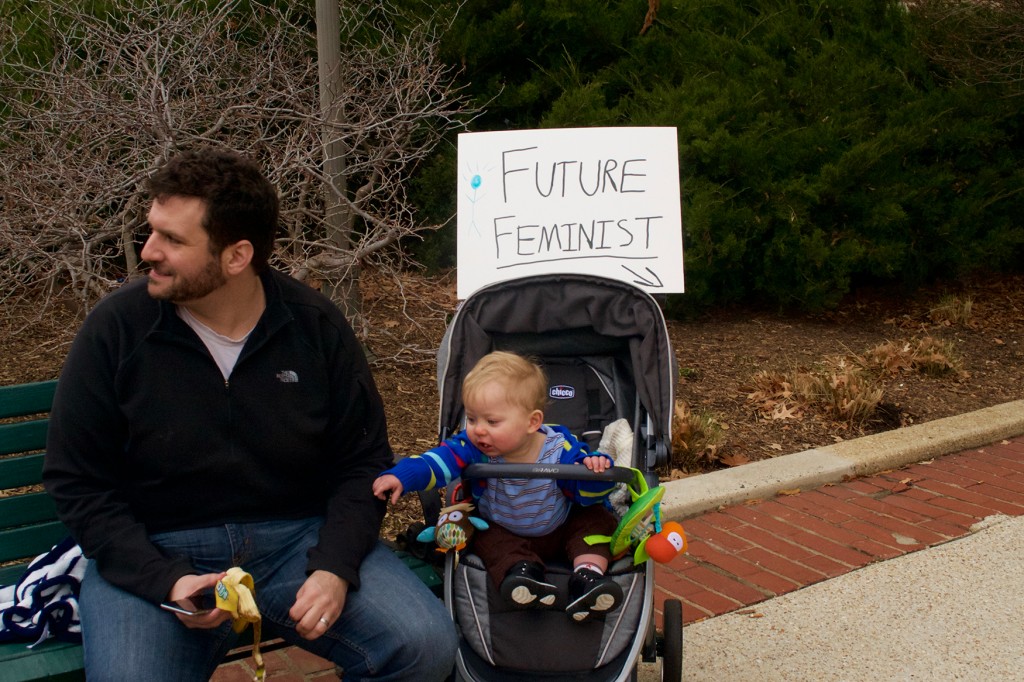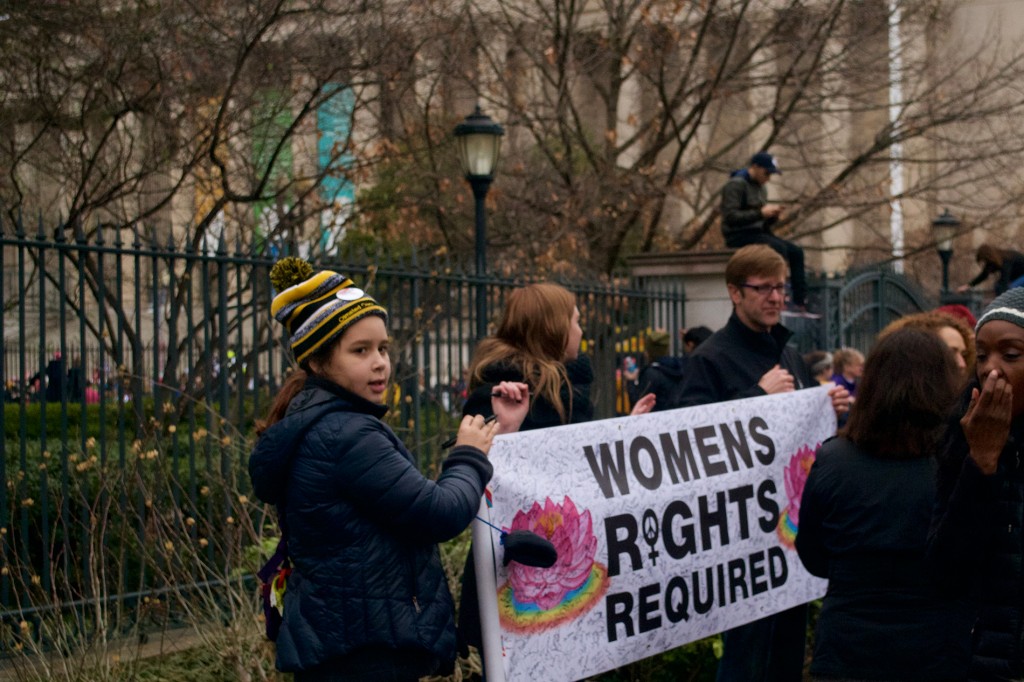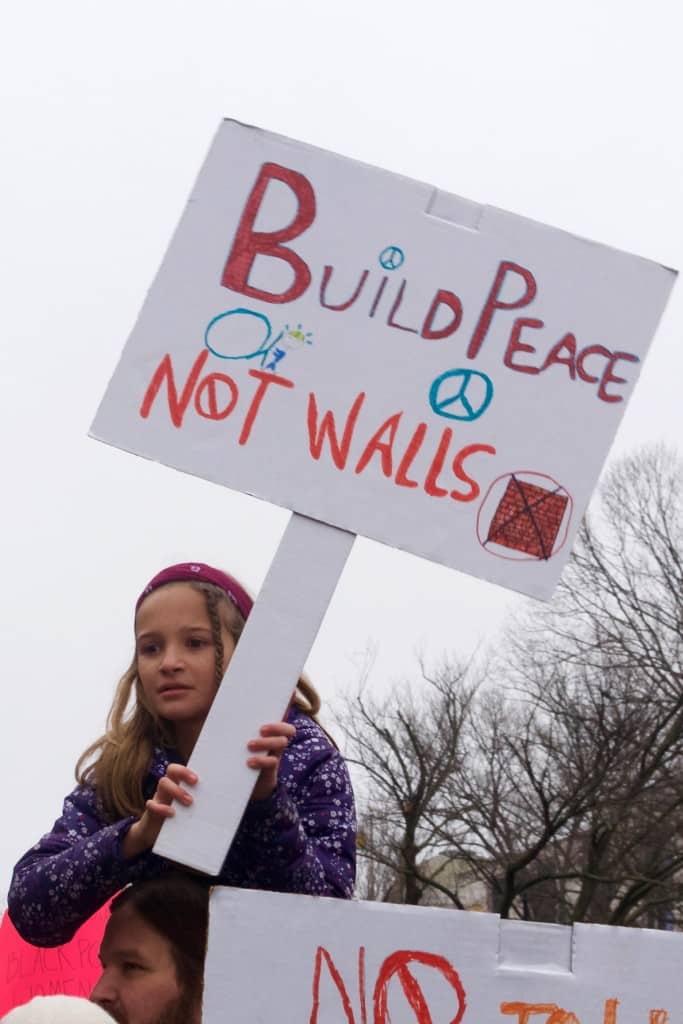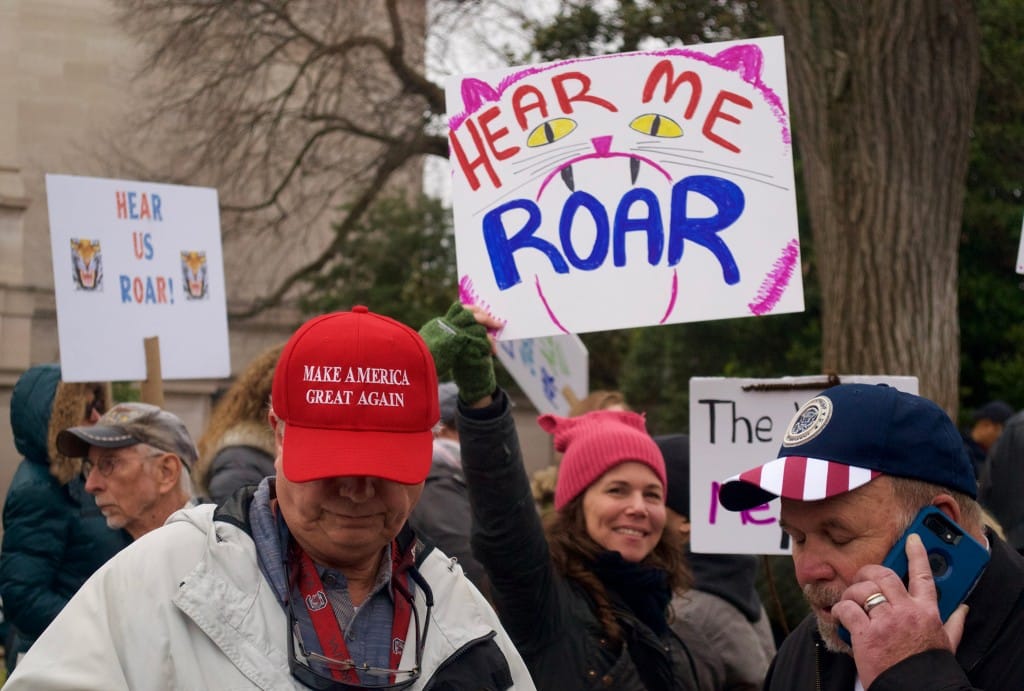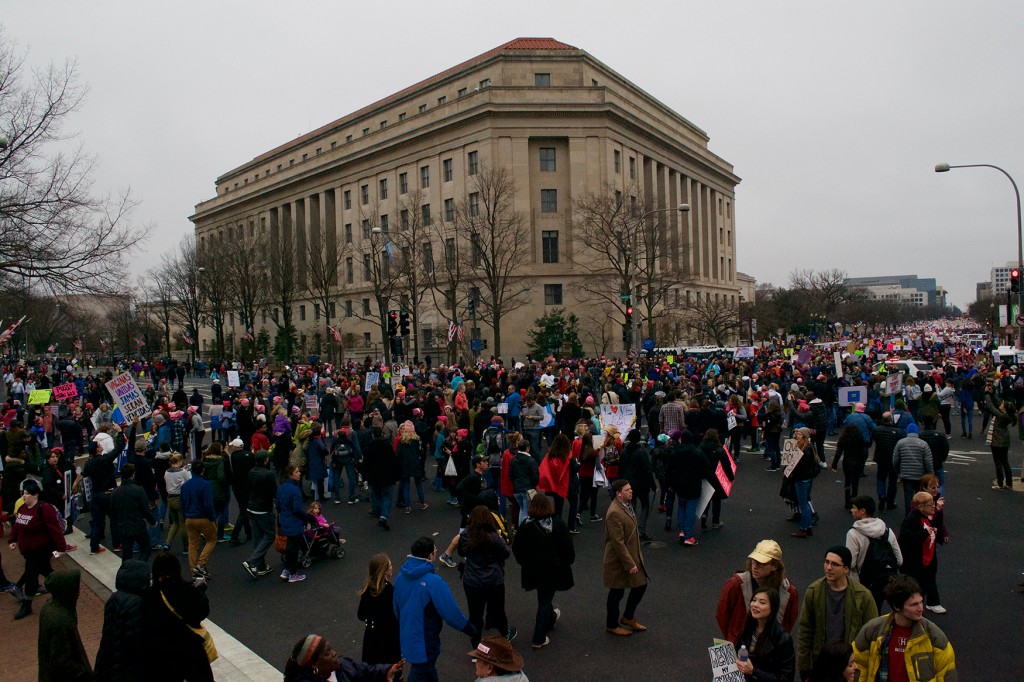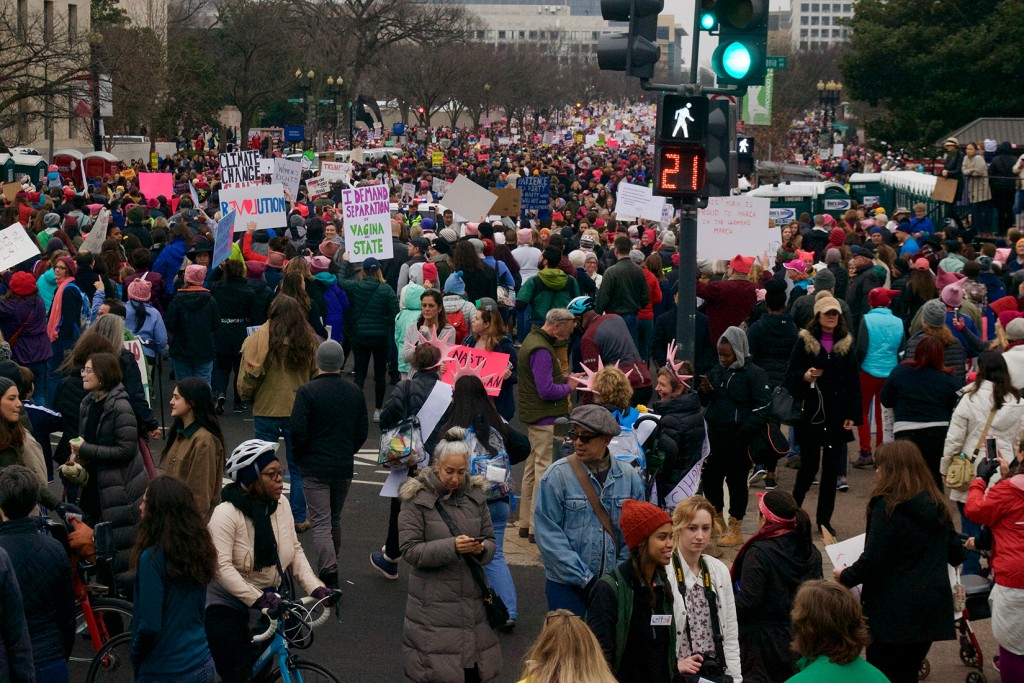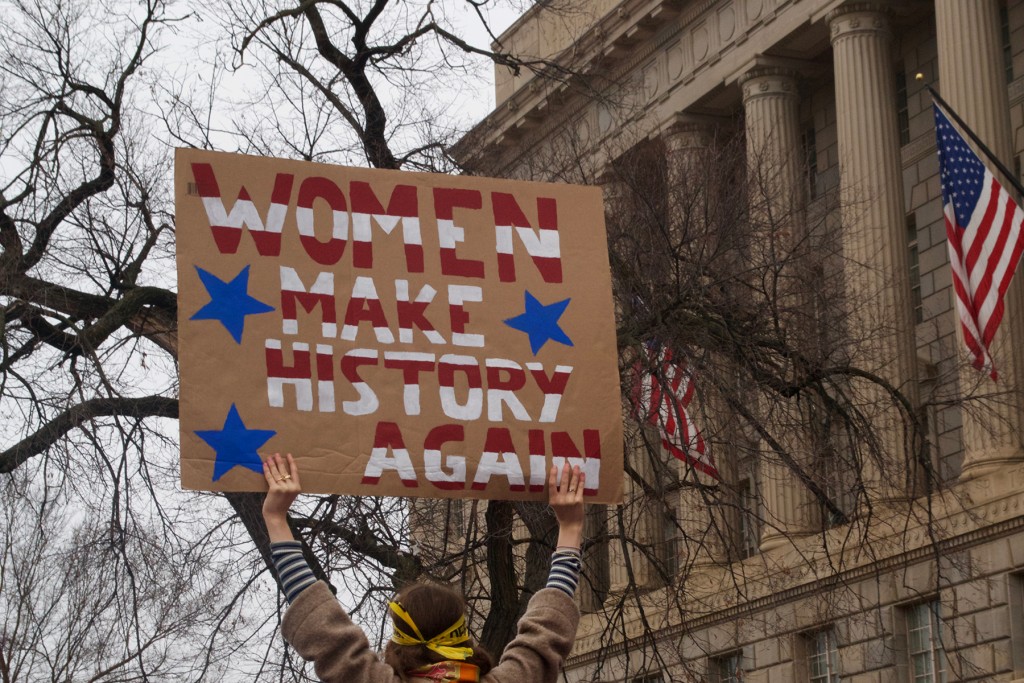Traveling nearly 150 miles away from my hometown, spending the night in a stale, cheap hotel in Cumberland, Maryland, and riding an overcrowded, forty-five-minute D.C metro with my mother and sister, I finally found peace.
I exited the metro station to a weary view. In the corner of my eye, I saw the Washington Monument perched beneath blanket of dense fog. I was unable to see the extent to which it rose. Our nation’s capital, including the monuments, the museums, and the history they retained, were captured in a blurred image. However, we all knew we weren’t here for the scenery.
I saw children with red noses, as parents reached for napkins from their backpacks, along with jackets to shield them from the brisk chill. Though the weather warned us away, we continued on our sacred protest with dignity. Our feet were becoming blistered and our fingers were growing numb to the cold, but we kept a firm grip on our signs, as they showed physical evidence of one more voice among many. We screamed to the heavens in unison, hoping that someone or something would hear us. The streets were ridden with intentions from the day prior, and we became fixated on rebuilding hope for ourselves.
My mother told me the story about the time she marched the same route, for the same reasons that we were marching that day. I thought about all the martyrs that fought hard for me to be here. I thought about my high-school history textbooks, and all of the battles that were fought. Sometimes we lost, and other times we won. But this wasn’t a simple reminder of our rights. It wasn’t begging, either. It was a stand, or even a warning. We weren’t going to give up what is inalienable. We refused to let our future be written without us, and we didn’t mind being called snowflakes, whiners, beggars, or crybabies for the sake of our children’s children reading about this day in their textbooks. We were going to be heard.
How long does it take to get a message across?
How many voices does it take to be heard?
How many times must we remind the people in these white buildings that we were here?
And how many times must we remind one another about the first amendment?
It was getting harder and harder to tell the different between rain and tears.
I met a father from Michigan outside of the IRS building. He was sitting on a park bench with his infant son, who sat defiantly in a stroller. As he fed his son a banana, I caught a glimpse of a sign that was attached to the top of the stroller.
“Future Feminist” was handwritten on the sign, with an arrow pointing down to his son.
“Will you sign this sir?” asked a young girl in front of me. She held a sign that said, “Women’s Rights Required.” I could not think of one reason why I wouldn’t, why anyone wouldn’t, for that matter.
There was a young girl perched upon her father’s shoulders. I had never seen a face so stoic in my life. She carried the weight of generations on her sign that was nearly the size of her body. The sign read, “Make Peace, Not Walls.”
I saw a man wearing a “Make American Great Again” hat. I wanted to ask him a question, but after seeing my camera he issued a very rude gesture and continued to talk on his cell phone. I never asked for his name. He never asked for mine, either.
Amidst the gloom, the tired travelers and packed metro sardines, I still found peace. It came to me after climbing a press box that was left abandoned from the prior day. I climbed up and looked across at the landscape of the National Mall, and that’s when the solace was finally received. It was written on the pavement, on the signs, on the pussy-hats, embodied in the largest crowd of people the world might ever see.
After returning to our hotel room, I hesitantly turned on the news, afraid of what the anchor might say. I had no idea that the news could bring me so much hope, after delivering nothing but anxiety the last few months. They reported the facts, finally, as I saw the sea of fellow marchers displayed on the television. Not only that, but even more images of the sister marches held that day worldwide. In that moment, I felt like I was once again part of the world.
According to The Women’s March on Washington’s website, there were 673 sister marches in many different cities on this day, with a total attendance of an estimated 4,956,422 people. I saw pictures of the sister march in my hometown, and knew they were all feeling peace, too. The march reached overseas, and even all seven continents with one protest in Antarctica.
We all promised each other peace that day. We all took responsibility for one another, and knew that our voices can only be heard in harmony with others. The Women’s March on Washington was more than a protest; it was for our own reassurance.

